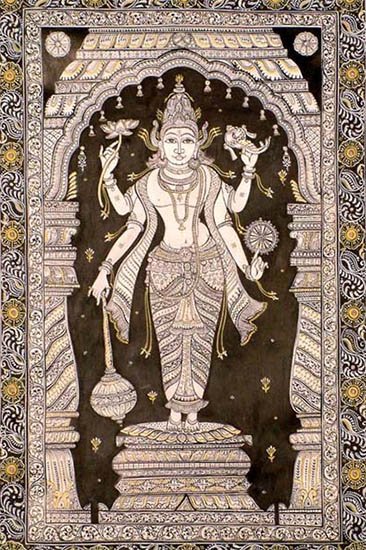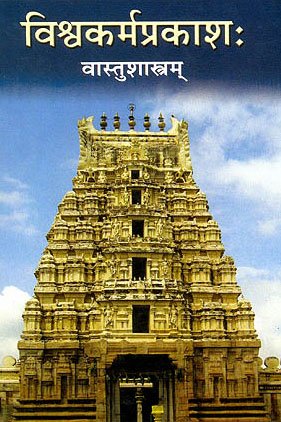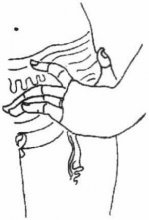Jangama, Jāṅgama, Jaṅgama, Jamgama: 27 definitions
Introduction:
Jangama means something in Hinduism, Sanskrit, Buddhism, Pali, the history of ancient India, Marathi, Jainism, Prakrit, Hindi, biology. If you want to know the exact meaning, history, etymology or English translation of this term then check out the descriptions on this page. Add your comment or reference to a book if you want to contribute to this summary article.
Images (photo gallery)
In Hinduism
Ayurveda (science of life)
Toxicology (Study and Treatment of poison)
Source: Shodhganga: Kasyapa Samhita—Text on Visha ChikitsaJaṅgama (जङ्गम, “mobile”) refers to one of the six kinds of Viṣa (venom or poison), according to the Kāśyapa Saṃhitā: an ancient Sanskrit text from the Pāñcarātra tradition dealing with both Tantra and Viṣacikitsā—an important topic from Āyurveda which deals with the study of Toxicology (Viṣavidyā or Sarpavidyā).—Kāśyapa, praising the efficacy and potency of the Garuḍa-mantra states that it annihilates poison even as the sun destroys darkness.
Unclassified Ayurveda definitions
Source: Wisdom Library: Āyurveda and botanyJāṅgama (जाङ्गम, “animal products”) refers to a kind of classification for dravya (‘substance’), according to its source. The term is used throughout Ayurvedic literature such as the Suśruta-saṃhitā and the Caraka-saṃhitā. Dravyas are the basic elemental substances from which all things emerge; they are composed the five mahābhūtas and act as receptacle for guṇas (‘qualties’).
Source: Ancient Science of Life: Snake bite treatment in Prayoga samuccayamJaṅgama (जङ्गम) or Jaṅgamaviṣa refers to “inanimate poison” and represents one of the two kinds of “poison” (viṣa), and is dealt with in the 20th century Prayogasamuccaya (one of the most popular and widely practised book in toxicology in Malayalam).—Prayoga-samuccayam contains many simple and practically feasible formulations which can be easily prepared and used for managing poisoned conditions (viz., sthāvara-viṣa). It is a compiled work which contains the cream of many toxicology books and saṃhitās (compendiums) which can give confidence to young practitioners of Ayurvedic system in handling emergencies with simple combinations.
The work classifies viṣa into two groups, viz. sthāvara and jaṅgama (animate and inanimate). This is followed by a brief description of the origin of snakes.
Source: gurumukhi.ru: Ayurveda glossary of termsJāṅgama (जाङ्गम):—Substance of animal origin like honey, milk, flesh, blood, nail, etc.

Āyurveda (आयुर्वेद, ayurveda) is a branch of Indian science dealing with medicine, herbalism, taxology, anatomy, surgery, alchemy and related topics. Traditional practice of Āyurveda in ancient India dates back to at least the first millenium BC. Literature is commonly written in Sanskrit using various poetic metres.
Shilpashastra (iconography)
Source: Shodhganga: The significance of the mūla-beras (śilpa)Jaṅgama (जङ्गम) or Karmabimba refers to images that are closely linked to the main image but are subjected to other forms of worship or are moveable. They are usually made out of metal. The karma bimba is linked to the mūla-beras. According to Ganapati Sthapati, “If the mūla-bera is fashioned standing then the karma-bimba should also be in standing posture. If the mūla-bera is fashioned seated, then the karma-bimba should also be seated or standing. If the mūla-bera is in reclining posture, the karma-bimba may be standing or seated, but not reclining”.

Shilpashastra (शिल्पशास्त्र, śilpaśāstra) represents the ancient Indian science (shastra) of creative arts (shilpa) such as sculpture, iconography and painting. Closely related to Vastushastra (architecture), they often share the same literature.
Purana and Itihasa (epic history)
Source: archive.org: Shiva Purana - English Translation1) Jaṅgama (जङ्गम) refers to the “mobile aspect” of Mount Himavat, according to the Śivapurāṇa 2.3.1.—Accordingly, as Brahmā narrated to Nārada:—“[...] O excellent sage, there in the northern region is a mountain called Himavat who is the lord of mountains and has great splendour and prosperity. His twofold aspects—that of a mobile nature (i.e., jaṅgama) and that of the immobile one—are well known. I succinctly describe his subtle form. He is beautiful and is the storehouse of multifarious gems. Extending from the eastern to the western ocean he appears like a measuring rod of the Earth”.
2) Jaṅgama (जङ्गम) refers to the “mobile beings” (as opposed to Sthāvara—“immobile beings”), according to the Śivapurāṇa 2.5.6 (“Prayer to Śiva”).—Accordingly, as the Gods eulogized Śiva: “Obeisance to you, the soul of all, obeisance to Śiva the remover of distress, [...] The various living beings created by you and to be created in future are invisible to us. The gods, the Asuras, the Brahmins, nay, the mobile (jaṅgama) and immobile beings eulogise you alone. [...]”.

The Purana (पुराण, purāṇas) refers to Sanskrit literature preserving ancient India’s vast cultural history, including historical legends, religious ceremonies, various arts and sciences. The eighteen mahapuranas total over 400,000 shlokas (metrical couplets) and date to at least several centuries BCE.
Vastushastra (architecture)
Source: Brill: Śaivism and the Tantric Traditions (architecture)Jaṅgama (जङ्गम) or Jaṅgamaliṅga refers to “mobile (images)”, according to verse 4.243 of the Mohacūrottara (Mohacūḍottara), a Śaiva text from the 10th century.—Accordingly, “The reward that a wise man gains from establishing a mobile image (jaṅgama—jaṅgamam liṅgam) [i.e. an ascetic] in a maṭha is the same as the reward that he gains from establishing a fixed image in a temple”.

Vastushastra (वास्तुशास्त्र, vāstuśāstra) refers to the ancient Indian science (shastra) of architecture (vastu), dealing with topics such architecture, sculpture, town-building, fort building and various other constructions. Vastu also deals with the philosophy of the architectural relation with the cosmic universe.
Shaktism (Shakta philosophy)
Source: Google Books: ManthanabhairavatantramJaṅgama (जङ्गम) refers to “all that moves”, according to the Kularatnapañcakāvatāra verse 1.23cd-33ab.—Accordingly, “[...] Whatever is visible or invisible to embodied beings in the three worlds is all, O goddess, certainly Kaula, the cause of union (with the absolute). O goddess, the ten-fold divine source (of phenomena, that is, the above nine and Kaula) is the fourfold womb (of the four kinds of living beings). They arise and dissolve away in Kaula. (All that) moves and is immobile (jaṅgama—sthāvaraṃ jaṃgamaṃ), the triple world with (all) that moves and does not is born from Kula and comes from Akula. O beloved, that is said to be Kaula”.

Shakta (शाक्त, śākta) or Shaktism (śāktism) represents a tradition of Hinduism where the Goddess (Devi) is revered and worshipped. Shakta literature includes a range of scriptures, including various Agamas and Tantras, although its roots may be traced back to the Vedas.
India history and geography
Source: Cologne Digital Sanskrit Dictionaries: Indian Epigraphical GlossaryJaṅgama.—cf. sa-sthāvara jaṅgama (IE 8-5); the moveable belongings of a village. (SITI), a priest of the Liṅgāyat or Vīraśaiva sect. Note: jaṅgama is defined in the “Indian epigraphical glossary” as it can be found on ancient inscriptions commonly written in Sanskrit, Prakrit or Dravidian languages.

The history of India traces the identification of countries, villages, towns and other regions of India, as well as mythology, zoology, royal dynasties, rulers, tribes, local festivities and traditions and regional languages. Ancient India enjoyed religious freedom and encourages the path of Dharma, a concept common to Buddhism, Hinduism, and Jainism.
Biology (plants and animals)
Source: Wisdom Library: Local Names of Plants and DrugsJangama [ಜಂಗಮ] in the Kannada language is the name of a plant identified with Glycosmis pentaphylla (Retz.) DC. from the Rutaceae (Lemon) family having the following synonyms: Glycosmis arborea, Glycosmis quinquefolia. For the possible medicinal usage of jangama, you can check this page for potential sources and references, although be aware that any some or none of the side-effects may not be mentioned here, wether they be harmful or beneficial to health.
Jangama in the Kannada language is the name of a plant identified with Glycosmis mauritiana (Lam.) Tanaka from the Rutaceae (Lemon) family having the following synonyms: Limonia mauritiana, Glycosmis pentaphylla, Limonia pentaphylla.
Source: Google Books: CRC World Dictionary (Regional names)1) Jangama in India is the name of a plant defined with Glycosmis cochinchinensis in various botanical sources. This page contains potential references in Ayurveda, modern medicine, and other folk traditions or local practices It has the synonym Glycosmis touranensis Guillaumin (among others).
2) Jangama is also identified with Glycosmis mauritiana It has the synonym Limonia pentaphylla Retz. (etc.).
3) Jangama is also identified with Glycosmis pentaphylla It has the synonym Limonia arborea Roxb. (etc.).
Example references for further research on medicinal uses or toxicity (see latin names for full list):
· Die Natürlichen Pflanzenfamilien (1896)
· Bulletin de la Société Botanique de France (1945)
· Lingnaam Agricultural Review (1924)
· Journ. Ind. Bot. Soc. (1937)
· Not. Pl. Asiat. (1854)
· Encycl. (Lamarck) (1792)
If you are looking for specific details regarding Jangama, for example diet and recipes, side effects, pregnancy safety, chemical composition, health benefits, extract dosage, have a look at these references.

This sections includes definitions from the five kingdoms of living things: Animals, Plants, Fungi, Protists and Monera. It will include both the official binomial nomenclature (scientific names usually in Latin) as well as regional spellings and variants.
Languages of India and abroad
Pali-English dictionary
Source: BuddhaSasana: Concise Pali-English Dictionaryjaṅgama : (adj.) movable.

Pali is the language of the Tipiṭaka, which is the sacred canon of Theravāda Buddhism and contains much of the Buddha’s speech. Closeley related to Sanskrit, both languages are used interchangeably between religions.
Marathi-English dictionary
Source: DDSA: The Molesworth Marathi and English Dictionaryjaṅgama (जंगम).—a (S) Locomotive: opp. to sthāvara Stationary.
--- OR ---
jaṅgama (जंगम).—m (S) An individual of a particular sect. They follow śiva, worship the lingam, and hate the Brahman. 2 A gurū amongst this people.
Source: DDSA: The Aryabhusan school dictionary, Marathi-Englishjaṅgama (जंगम).—a Locomotive. (Opp. sthāvara.) m An individual of a particular sect.
Marathi is an Indo-European language having over 70 million native speakers people in (predominantly) Maharashtra India. Marathi, like many other Indo-Aryan languages, evolved from early forms of Prakrit, which itself is a subset of Sanskrit, one of the most ancient languages of the world.
Sanskrit dictionary
Source: DDSA: The practical Sanskrit-English dictionaryJaṅgama (जङ्गम).—a. [gam-yaṅ ac]
1) Moving, living, movable (opp. immovable sthāvara); चिताग्निरिव जङ्गमः (citāgniriva jaṅgamaḥ) R.15.16; शोकाग्निरिव जङ्गमः (śokāgniriva jaṅgamaḥ) Mv.5.2; Manusmṛti 1.41.
2) Derived from living beings.
-mam A movable thing; R.2.44.
Source: Cologne Digital Sanskrit Dictionaries: Edgerton Buddhist Hybrid Sanskrit DictionaryJaṅgamā (जङ्गमा).—name of a rākṣasī: Mahā-Māyūrī 243.24.
Source: Cologne Digital Sanskrit Dictionaries: Shabda-Sagara Sanskrit-English DictionaryJaṅgama (जङ्गम).—mfn.
(-maḥ-mā-maṃ) Locomotive, moveable, that which has motion as opposed to that which is stationary. E. gam to go affix yaṅ-ac the radical reduplicated.
Source: Cologne Digital Sanskrit Dictionaries: Benfey Sanskrit-English DictionaryJaṅgama (जङ्गम).—[jaṅgam + a] (frequentat. of gam), adj., f. mā. 1. Moveable, [Mānavadharmaśāstra] 1, 41; patrolling, [Mānavadharmaśāstra] 9, 266. 2. Living, Mahābhārata 1, 5019.
Source: Cologne Digital Sanskrit Dictionaries: Cappeller Sanskrit-English DictionaryJaṅgama (जङ्गम).—[adjective] going, moving, living ([abstract] tva [neuter]); [neuter] what is moving or alive.
Source: Cologne Digital Sanskrit Dictionaries: Monier-Williams Sanskrit-English Dictionary1) Jaṅgama (जङ्गम):—[from jaga] a mf(ā)n. ([Nirukta, by Yāska v, 3; ix, 13]; √gam, [Intensive]) moving, locomotive (opposed to stationary, sthāvara or sthira), living, [Aitareya-upaniṣad v, 3; Manu-smṛti; Mahābhārata] etc.
2) [v.s. ...] (ifc. f. ā) a living being, [Mahābhārata; Bhāgavata-purāṇa i, 17, 34]
3) [v.s. ...] (with viṣa, venom) coming from living beings (opposed to poison), [Mahābhārata i, 5019; Suśruta]
4) [v.s. ...] m. [plural] Name of a Śaiva sect, [Śaṃkara-vijaya iv, 28.]
5) b mana See jaga.
Source: Cologne Digital Sanskrit Dictionaries: Yates Sanskrit-English DictionaryJaṅgama (जङ्गम):—[(maḥ-mā-maṃ) a.] Loco-motive, moveable, not fixed.
Source: DDSA: Paia-sadda-mahannavo; a comprehensive Prakrit Hindi dictionary (S)Jaṃgama (जंगम) in the Sanskrit language is related to the Prakrit word: Jaṃgama.
[Sanskrit to German]
Sanskrit, also spelled संस्कृतम् (saṃskṛtam), is an ancient language of India commonly seen as the grandmother of the Indo-European language family (even English!). Closely allied with Prakrit and Pali, Sanskrit is more exhaustive in both grammar and terms and has the most extensive collection of literature in the world, greatly surpassing its sister-languages Greek and Latin.
Hindi dictionary
Source: DDSA: A practical Hindi-English dictionaryJaṃgama (जंगम) [Also spelled jangam]:—(a) moving; movable; —[saṃpatti] movable property.
...
Prakrit-English dictionary
Source: DDSA: Paia-sadda-mahannavo; a comprehensive Prakrit Hindi dictionaryJaṃgama (जंगम) in the Prakrit language is related to the Sanskrit word: Jaṃgama.
Prakrit is an ancient language closely associated with both Pali and Sanskrit. Jain literature is often composed in this language or sub-dialects, such as the Agamas and their commentaries which are written in Ardhamagadhi and Maharashtri Prakrit. The earliest extant texts can be dated to as early as the 4th century BCE although core portions might be older.
Kannada-English dictionary
Source: Alar: Kannada-English corpusJaṃgama (ಜಂಗಮ):—[adjective] moving, movable or capable of moving from place to place; not fixed or still; mobile.
--- OR ---
Jaṃgama (ಜಂಗಮ):—
1) [noun] that which is moving, capable of moving; an animate thing (as distinguished from the inanimate, which cannot move on its own).
2) [noun] a Śaiva mendicant who does not stay at one place for more than a certain number of days.
3) [noun] the poison secreted by snakes, scorpion, etc.
--- OR ---
Jaṃgama (ಜಂಗಮ):—[noun] the plant Glycosmis cohinchinensis of Rutaceae family.
Kannada is a Dravidian language (as opposed to the Indo-European language family) mainly spoken in the southwestern region of India.
See also (Relevant definitions)
Starts with (+2): Jamgamagitti, Jamgamate, Jamgamati, Jamgamavadi, Jangamadhavalem, Jangamajindagi, Jangamakuti, Jangamalinga, Jangamamala, Jangamamsyadurdhvabhaga, Jangamana, Jangamapatta, Jangamashetai, Jangamashivapujakrama, Jangamatva, Jangamavidya, Jangamavisha, Jangametara, Jangamopama, Jankamalinkam.
Ends with: Bhujangama, Jadajamgama, Sa-sthavara-jangama, Sasthanujangama, Sthavarajangama, Sthirajangama.
Full-text (+51): Jangamakuti, Sthavara, Jangamatva, Sthavar, Asthavara, Jangam, Jangametara, Basavanna, Sthavarajangama, Lingavat, Cankamalinkam, Jangamalinga, Anubhavasara, Sasthanujangama, Sthirajangama, Sthavi, Sa-sthavara-jangama, Silavanta, Basava, Yedem.
Relevant text
Search found 28 books and stories containing Jangama, Jāṅgama, Jaṅgama, Jamgama, Jaṅgamā, Jaṃgama, Jamgama, Jaṃgama; (plurals include: Jangamas, Jāṅgamas, Jaṅgamas, Jamgamas, Jaṅgamās, Jaṃgamas). You can also click to the full overview containing English textual excerpts. Below are direct links for the most relevant articles:
Shrimad Bhagavad-gita (by Narayana Gosvami)
Verse 13.27 < [Chapter 13 - Prakṛti-puruṣa-vibhāga-yoga]
The Lingayats-Their Religion and Literature < [May 1937]
Reviews < [July – September, 1981]
Amarakoshodghatana of Kshirasvamin (study) (by A. Yamuna Devi)
Fauna (2-3): Division of Animals based on their origin < [Chapter 5 - Aspects of Nature]
Chaitanya Bhagavata (by Bhumipati Dāsa)
Verse 2.23.159 < [Chapter 23 - Wandering about Navadvīpa On the Day the Lord Delivered the Kazi]
Verse 3.1.253 < [Chapter 1 - Meeting Again at the House of Śrī Advaita Ācārya]
Verse 2.1.248 < [Chapter 1 - The Beginning of the Lord’s Manifestation and His Instructions on Kṛṣṇa-saṅkīrtana]
Manusmriti with the Commentary of Medhatithi (by Ganganatha Jha)
Verse 5.28 < [Section VI - Lawful and Forbidden Meat]
Rig Veda (translation and commentary) (by H. H. Wilson)
Related products

